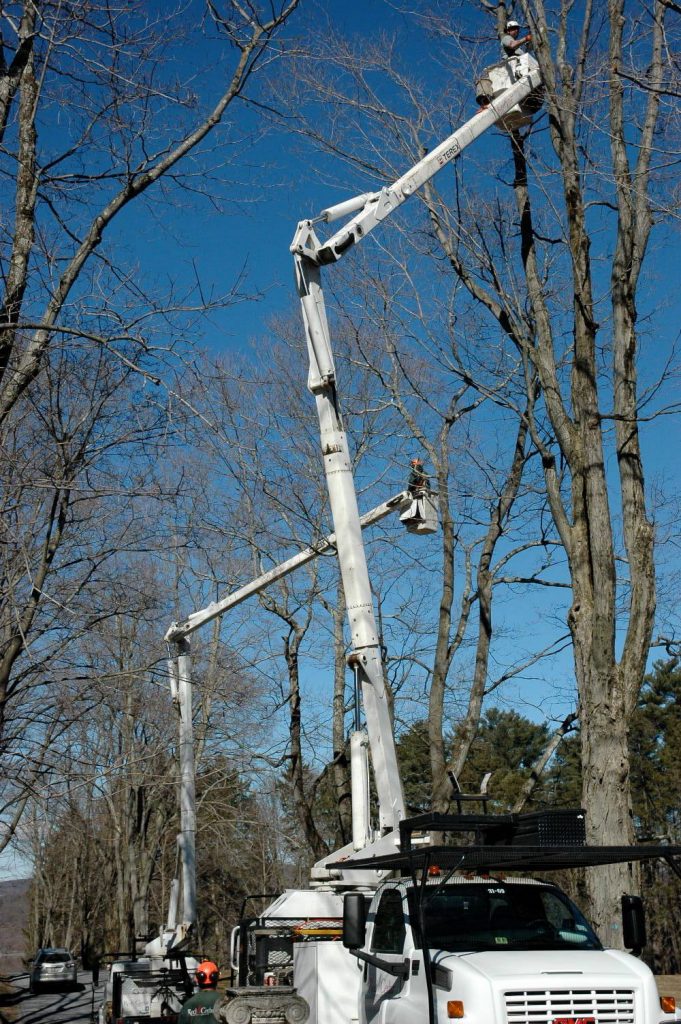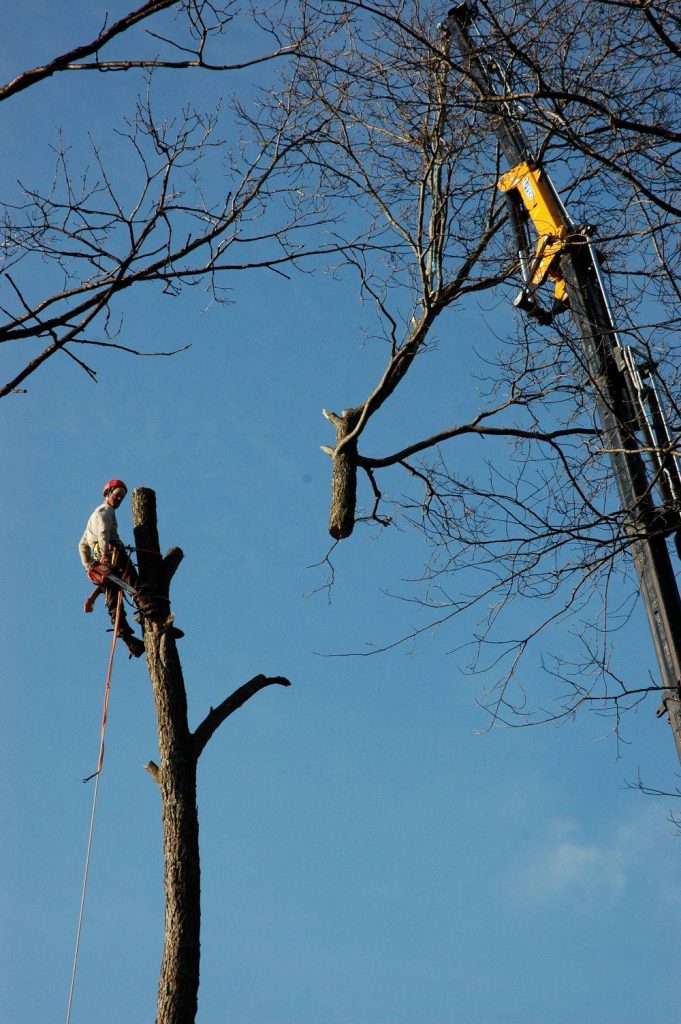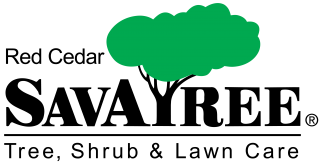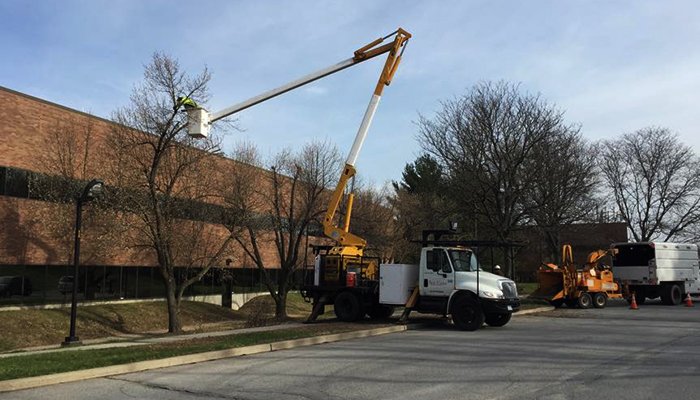Pruning should be purposefully completed with the intentions of encouraging growth, increasing flowering or fruit production, improving overall health, removing damaged or dead limbs, and/or for aesthetic purposes. When it comes to tree pruning on your property, it’s recommended that you hire a professional who prunes in accordance with the American National Standard Institute (ANSI A300). DIY pruning can be dangerous for several reasons, to not only your tree, but you, and potentially your home.
Here are some common mistakes and dangers of DIY pruning –
Why Is DIY Pruning Dangerous?
 It’s Just A Dangerous Job – Pruning trees involves the mixing together of a lot of dangerous components; heights, chainsaws, ladders, heavy machinery, manual labor, etc. In fact, according to the US Census Bureau, tree trimming is one of the most dangerous jobs. This type of labor is dangerous to those that are professionally trained and who take proper safety measures. So, imagine how dangerous it is to a homeowner with no formal training or knowledge base, and the lack of professional safety equipment (safety harness, bucket trucks, professional ladders, hard hats, etc.) and certification? Attempting to maneuver heavy and sharp machinery while balancing on a ladder is no small feat, and should not be attempted unless properly trained.
It’s Just A Dangerous Job – Pruning trees involves the mixing together of a lot of dangerous components; heights, chainsaws, ladders, heavy machinery, manual labor, etc. In fact, according to the US Census Bureau, tree trimming is one of the most dangerous jobs. This type of labor is dangerous to those that are professionally trained and who take proper safety measures. So, imagine how dangerous it is to a homeowner with no formal training or knowledge base, and the lack of professional safety equipment (safety harness, bucket trucks, professional ladders, hard hats, etc.) and certification? Attempting to maneuver heavy and sharp machinery while balancing on a ladder is no small feat, and should not be attempted unless properly trained.- Improper Pruning Can Damage Your Tree – Trees that are pruned haphazardly, without purpose, or incorrectly can result in a weakened tree. A tree that is weakened is more likely to develop disease and rot.
- Weakened Trees Become Hazardous – Weakened, rotted, or diseased trees can become hazardous, as these trees are more likely to fall, shed limbs, or break during a storm. This could mean damages to what surrounds it, like your roof, cars, pool, etc.
What Are Some Common DIY Pruning Mistakes?
- Using Dull Tools – Using dull tools that have been hanging around in your shed or garage increases the risks mentioned above. Not only does using a dull tool make this hard job even harder, but it also creates more significant wounds, adding stress to your tree and creating a longer healing process.
- Using Unsanitary Tools – It is possible to transfer disease from an infected tree or plant to a new one through the use of the same, unsanitized, tools.
- Tree Topping – Tree topping should be avoided at all costs. Contrary to popular belief, the process of tree pruning is very strategic and involves cutting in very specific places based on desired goals, and the overall health of your tree. Simply chopping off the top of your tree is the opposite of strategic, and results in deformities and damages.
 Over Pruning – Pruning too much can also result in a less than desirable outcome. You should never remove more than 25% of a tree’s leaf-bearing crown. Additionally, it’s important to know that fully matured trees take longer to heal after pruning.
Over Pruning – Pruning too much can also result in a less than desirable outcome. You should never remove more than 25% of a tree’s leaf-bearing crown. Additionally, it’s important to know that fully matured trees take longer to heal after pruning.- Pruning In The Wrong Season – When you prune your tree, depending on the type of tree and other varying factors, is very important. Winter is a great time to prune most trees, because of dormancy and because it encourages new spring growth. Summer is also a good time to prune, because it is easier to see where the problem limbs or dead areas are. Fall is typically not an ideal season to prune because of the increased chances of fungi growth, and the autumn air causing trees to heal slower (makes them more susceptible to disease). Determining the best time to prune your tree relies heavily on the type of tree.
Pruning your trees purposefully is extremely important in encouraging growth, removing hazards, preventing disease, and promoting the tree’s overall health. Because of this, it should be done at least once a year. There are several different pruning methods that satisfy different needs (pollarding, reduction, cleaning, thinning, raising). DIY pruning is not only extremely dangerous, but it can also be counterproductive, as improper pruning can have adverse effects. It is best to leave the job of pruning to your professional arborist to help avoid haphazard and uneducated cuts, and/or injury to you, your home, or your trees. At Red Cedar, our arborists are ISA certified giving us the qualifications, knowledge, and skill to properly and safely prune the trees on your property. Contact us today for your free tree consultation, and let us help properly prune your trees before fall!


